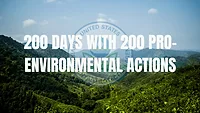100 Days of Action Under Trump Administration: Praise and Scrutiny
The administration highlighted some of the key progress points since its start.

Image via Gremlin from Getty Images Signature
EPA Administrator Lee Zeldin released a report this week detailing 100 environmental actions undertaken in the first 100 days of President Trump’s second term, positioning the agency’s work as proof that environmental protection and economic prosperity can go hand in hand. In an op-ed published by The Hill, Zeldin emphasized that the Environmental Protection Agency (EPA) is “rejecting the false choice between environmental stewardship and economic prosperity,” asserting that the agency is delivering results without relying on what he described as “extreme climate alarmism.”
Since the inauguration on January 20, the EPA has taken action across air, land, and water policy. Zeldin noted that the agency has approved 25 State Implementation Plans to improve air quality, including clearing 16 that were backlogged under the previous administration. At the southern border, the EPA responded to air quality issues related to sulfur odors from the Tijuana River and pledged immediate action to address raw sewage flowing into the U.S. from Mexico.
The EPA also intervened in the controversial case of the unregulated geoengineering startup Make Sunsets, which had released sulfur dioxide into the atmosphere in an attempt to sell “cooling credits.” Zeldin said the agency "demanded immediate answers" to safeguard U.S. air quality.
On land cleanup efforts, the agency has cleared four Superfund sites either fully or in part, supported redevelopment at 21 sites across 13 states, and facilitated anticipated reuse of 27 brownfield sites. One of the most high-profile developments came in Missouri, where Zeldin announced a two-year acceleration of the cleanup timeline for the West Lake Landfill Superfund site, following a visit with Sen. Josh Hawley.
The EPA also responded to this year’s catastrophic wildfires in Los Angeles, completing its largest-ever hazardous material removal operation by clearing over 13,000 properties in just 28 days.
In water policy, the agency updated quality standards for 38 miles of the Delaware River, approved a decade-long restoration plan for the Long Island Sound, and introduced a new method to detect 40 types of PFAS “forever chemicals” in water systems — a move seen as a critical step in confronting emerging contaminants.
Zeldin highlighted the agency’s accelerated permit reviews and chemical safety processes as examples of balancing speed with safety. “Our rapid approval of backlogged permits is giving businesses the certainty they need while ensuring proper environmental safeguards,” he wrote. Enforcement actions have reportedly led to pollution reductions of 15 million pounds and secured $296 million for cleanups affecting over 700,000 cubic yards of contamination.
Still, the administration’s approach has drawn significant criticism from environmental advocates, scientists, and former EPA officials. Critics argue that the focus on speed, deregulation, and economic outcomes may undercut long-term environmental protections and weaken oversight. “There’s a difference between fast-tracking cleanup and fully remediating sites in a way that protects communities for generations,” said one policy analyst from the Natural Resources Defense Council.
Concerns have also been raised about the agency’s reluctance to address climate change in a comprehensive way. While Zeldin criticized what he called a “radical agenda” based on climate alarmism, experts caution that failing to confront root causes — particularly fossil fuel emissions — limits the agency’s ability to protect the environment in the long term.
Additionally, the administration’s efforts to “unleash American energy” and promote domestic auto manufacturing have fueled debate over whether these economic priorities are compatible with serious environmental reform. Some worry that rolling back environmental safeguards in favor of industrial growth could reverse progress in air and water quality.
Nevertheless, Zeldin maintains that the Trump EPA is forging a new path — one that emphasizes results over rhetoric and redefines regulation as a tool for empowerment rather than restriction. “In just 100 days,” he wrote, “Trump’s EPA has demonstrated what’s possible when environmental policy focuses on results.”
As the administration moves forward, its environmental agenda will continue to face the test of both public trust and scientific scrutiny — with its legacy likely defined by whether this balance of environment and economy proves sustainable.
Looking for a reprint of this article?
From high-res PDFs to custom plaques, order your copy today!







